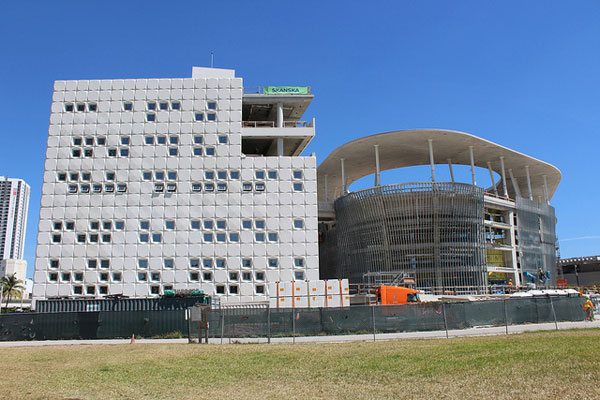
April 3, 2018; Miami Herald
After several delays, mostly owing to fundraising shortfalls, an unusual “reconstitution” of the governing board, a financial rescue by county government, and a change in staff leadership, the long-anticipated Philip and Patricia Frost Museum of Science, better known as Frost Science, opened last May in Miami to rave reviews and has to date had more than 800,000 visitors. However, the main contractor on the building project, international firm Skanska, is suing the museum for payments not received—both for work that was completed, and for final work on the facility left incomplete once the Frost received its final certificate of occupancy last November.
What began as a modest community-led project 60 years ago and later evolved into the Miami Science Museum has been renamed for its lead benefactors and is now among the premier nonprofit science museums in the country, boasting both a planetarium and an aquarium. But Frost Science just can’t seem to shake the troublesome headlines that have followed the construction of its fancy new home.
As reported in the Miami Herald this week, Skanska USA general manager Michael Brown had this to say in a statement:
The public is enjoying Downtown Miami’s newest museum, but the workers who built the building haven’t been paid in full for their labor. Skanska and its subcontractors—including many small and local businesses—are owed millions.
Sign up for our free newsletters
Subscribe to NPQ's newsletters to have our top stories delivered directly to your inbox.
By signing up, you agree to our privacy policy and terms of use, and to receive messages from NPQ and our partners.
The lawsuit does not specify the amount of money being disputed. Museum president Frank Steslow described the outstanding work as mostly minor and says it should be covered by Skanska under the warranty. Skanska agrees that most of the outstanding work is minor—with the exception of a conical wall surrounding the “oculus” opening of the museum’s 500,000-gallon aquarium, which is a more complicated fix. But the company believes it should be paid for supervising the outstanding work and sees the Frost’s failure to move forward as yet another sign of the budget strains that have plagued this project for years.
In 2016, Skanska continued work on the project. They deferred some payments, as Frost Science first failed to secure huge bank loans (which some observers thought were overly ambitious), then had to wait for Miami-Dade leaders to approve an additional $49 million in construction funding to rescue the project, which meant the Frost had to forego the previously agreed $4 million a year in operating funds from the county.
The museum opened last May with a temporary occupancy permit. According to Skanska, the museum stopped making payments to the firm in November once it received its final occupancy permit from Miami, despite an outstanding “punch list” from the architects identifying 7,000 fixes that still needed attention.
The litigation will, of course, play out over time, and each side will have an opportunity to make its case. But Steslow’s description of the lawsuit as “a little bit of background noise” seems more than a bit tone deaf—not only in reference to those small and local businesses who have not been paid for contracted work, but also because the museum is still waging a legal battle with Suffolk Construction, the project’s original main contractor, which the nonprofit fired in 2014. Suffolk and two masonry subcontractors filed lawsuits against Frost Science in 2016, citing incomplete plans and design errors in the work they’d been hired to do and months-long delays when those problems were not addressed. Suffolk is seeking $800,000 from the museum, along with the “millions” Skanska hopes to recover.
This new museum may be exceptional when it comes to science, but it seems to have ongoing challenges with math—and messaging.—Eileen Cunniffe











